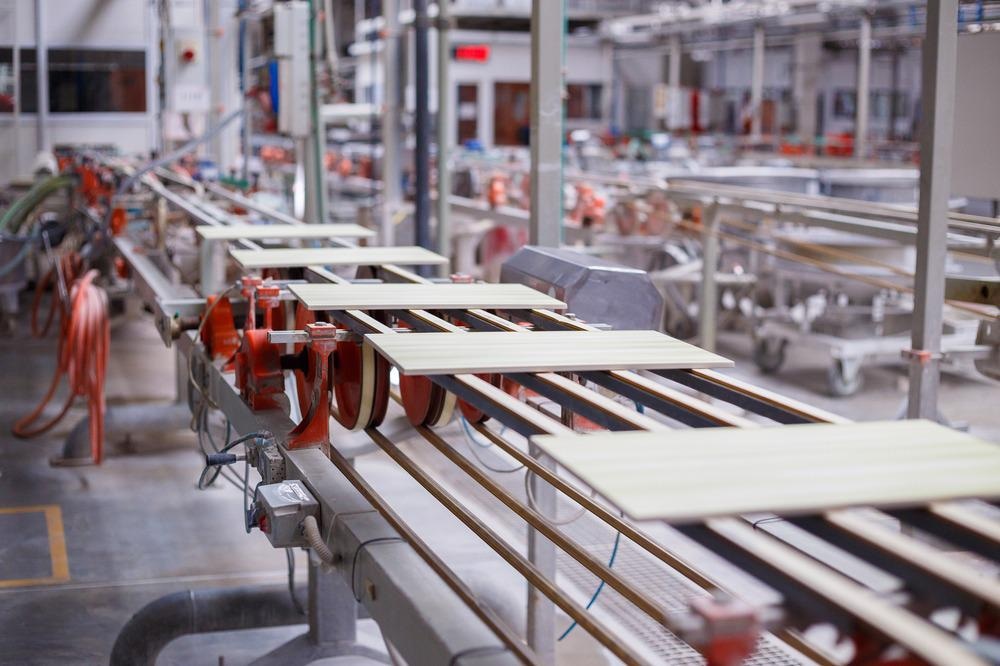.jpg) By Susha Cheriyedath, M.Sc.Nov 22 2021Reviewed by Skyla Baily
By Susha Cheriyedath, M.Sc.Nov 22 2021Reviewed by Skyla BailyResearchers from China have fabricated a ferroelectric ceramic with reduced grain size for improved energy storage capacity as a substitute to lead in dielectric capacitors. This research has been published in the journal of Chemical Engineering Journal.

Study: Grain size modulated (Na0.5Bi0.5)0.65Sr0.35TiO3-based ceramics with enhanced energy storage properties. Image Credit: Roman Dombrowski/Shutterstock.com
What is a Ferroelectric-Based Ceramic Dielectric Capacitor?
Dielectric capacitors are an effective solution for high energy storage demands. High energy density, satisfactory power density, and effective charge-discharge rate are primary areas of focus for studies on dielectric capacitors. However, most of the commercially available dielectric capacitors contain the element lead (Pb), which is harmful to living beings.
Ferroelectric ceramics are the closest solution to lead-based ceramic dielectric capacitors, but their application is hindered by their poor efficiency and low energy density.
Relaxor ferroelectrics (RFEs) exhibit higher energy-storage efficiencies than linear dielectrics, normal ferroelectrics (FEs), and anti-ferroelectrics (AFEs). However, normal FEs can be chemically modified and transformed into RFEs through the destruction of ferroelectric domains. There are specific regions in a relaxor ferroelectric called polar nano regions (PNRs), which can delay the polarization saturation at certain electric fields.
(Na0.5Bi0.5)TiO3 (NBT)-based ferroelectrics have very high Curie point (Tc = ~320◦C) and large maximum polarization (Pmax) of over 40 μC/cm2. However, NBT ceramics have low energy storage efficiency due to their high remnant polarization (Pr), which severely hampers its energy storage performance.
Many researchers have tried to destroy the long-range order of ferroelectrics such as NBT-based ceramics by doping with various chemical reagents to make them behave like a relaxor ferroelectric with a reduced remnant polarization.
How Did the Researchers Make NBT Behave like RFE?
The researchers added linear dielectrics such as SrTiO3 and antiferroelectric additives such as NaNbO3 as modifiers in NBT-based ceramic. The resulting (Na0.5Bi0.5)0.7 Sr0.3TiO3 (NBST) exhibited enhanced recoverable energy density, efficiency, and slender polarization vs electric field loop.
More on Ceramics: Textile Sludge Waste Could Find Use in Ceramics
Further, the NBST ceramics were doped with BiMg0.5Sn0.5O3 (BMS) through a conventional solid-state reaction to get lead free (1-x)(Na0.5Bi0.5)0.65Sr0.35TiO3-xBiMg0.5Sn0.5O3 ((1-x) NBST-xBMS, 0 ≤ x ≤ 0.15).
The corresponding stoichiometric powders were mixed thoroughly according to their element ratio with zirconia balls and absolute ethyl alcohol in a polyethylene container for 12 hours. Then the mixture was calcined at 850 ◦C for 3 hours. An isostatic press was used to press the dried mixture at 200 MPa for 60 seconds into pellets with a diameter of 10 mm. Finally, (1-x)NBST-xBMS ceramics were powder-sintered at 1150–1160 ◦C for 2 hours.
What Do the Results Say?
Out of several compositions of ((1-x) NBST-xBMS, 0 ≤ x ≤ 0.15), optimal energy-storage performances were achieved for 0.9NBST-0.1BMS composition. 0.9NBST-0.1BMS has a perovskite structure with no impurities. However, impurities start to appear for the 0.85NBST-0.15BMS samples and above i.e. (x>0.15), due to the decreasing solubility of BMS in NBST.
The presence of Mg2+ and Sn4+ in B-sites effectively destroyed the long-range order of 0.9NBST-0.1BMS ferroelectric, thus resulting in a weak coupling structure, which improved energy storage efficiency. It also showed high-temperature stability and frequency insensitivity of recovery energy density and efficiency, which is crucial for normal work at elevated temperatures. Additionally, the additive BMS significantly reduced the grain size of the ceramic, which increased the breakdown field.
It was observed that with the increase of BMS content, both maximum polarization (Pmax) and remnant polarization (Pr) decreased, and the polarization-electric field hysteresis loop became slender, which is beneficial to enhance energy storage performance.
Reference
Y. Gao, X. Zhu, B. Yang, P. Shi, R. Kang, Y. Yuan, Q. Liu, M. Wu, J. Gao, X. Lou, Grain size modulated (Na0.5Bi0.5)0.65Sr0.35TiO3-based ceramics with enhanced energy storage properties, Chemical Engineering Journal, 2021, 133584. https://www.sciencedirect.com/science/article/pii/S1385894721051585?via%3Dihub
Disclaimer: The views expressed here are those of the author expressed in their private capacity and do not necessarily represent the views of AZoM.com Limited T/A AZoNetwork the owner and operator of this website. This disclaimer forms part of the Terms and conditions of use of this website.